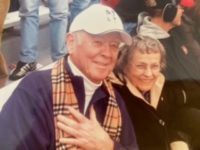Gregory A. Howell, co-founder of the Lean Construction Institute and a forceful advocate since the 1990s of transformed project delivery along lean principles focused on cutting waste and adding predictability, died on June 15, in Ketchum, Idaho. He was 77.
He died of natural causes, according to a family member.
A U.S. Navy Civil Engineer Corps veteran of service in Vietnam and Thailand, he also was a consultant and went on to teach civil engineering at the University of New Mexico and Arizona State University.
Howell derived many of his insights from time lapse films he shot of construction projects between 1975 and 1985. “Productivity was easy to improve when we could overcome the pressure for immediate production,” he said. “Repeatedly, we found that this pressure caused people to organize their work to complete the next unit of whatever they were working on, with little thought about completing all of their required tasks.”
Along with Glenn Ballard, Howell founded the institute in 1997. It developed lean project delivery, a trademarked project production process adapted from manufacturing that is designed to eliminate waste in construction through increased collaboration, predictability, innovation and accountability.
While lean results could be achieved using traditional contracts, they advanced more rapidly via integrated project delivery, according to Howell.
“Greg was the traveling prophet for the ‘holistic lean construction vision’ for delivering projects,” says Cliff Schexnayder Sr., a former faculty member at the Del E. Webb School of Construction, Arizona State University. “I believe this is the way to deliver true quality. But it is hard because you have to think. That is why he preached getting everyone in the room. Let all voices be heard.”
Mike Vorster, Emeritus Professor of Construction Engineering at Virginia Tech, adds that "many forget the groundbreaking work Greg did in setting up Timelapse Inc. and bringing the whole concept of time lapse photography to the construction industry."
He says that work "gave us a practical boots-on-the-ground tool we could use to analyze field operations and improve productivity. His work with time lapse photography earned many companies millions of dollars in improved field performance.”





Post a comment to this article
Report Abusive Comment